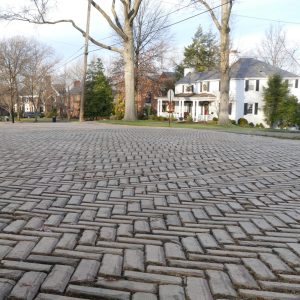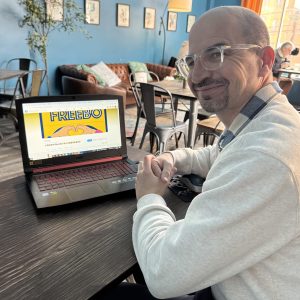Off to college: Leaving Lebo for the big city

Yesterday I walked into Chick-fil-A with my roommate, who also hails from Pittsburgh, and two new college friends.
The bright white tile met with the sticky smell of pickle juice, sugary lemonade and chicken felt like home. We couldn’t quite trace why, but the second we entered the fast-food chain we immediately turned to each other in shock—and pleasant surprise.
As it turns out, the Chick-fil-A here in Wheaton, Ill. has the exact same layout and design as the one we all know and love on Washington Road.
Moving into college and leaving Mt. Lebanon School District for Wheaton College has been full of moments similar to the Chick-fil-A incident. Life has changed, but my childhood memories and experiences will continue to inform this next chapter of my life.
I had another deja vu moment during the college orientation process. My school offers a program called Wheaton in Chicago, where students stay an entire semester in a Chicago neighborhood. In an effort to give first-year students a bite-size taste of the curriculum, Wheaton students participate in a program called Passage. As part of the program, I chose to stay in the Woodlawn neighborhood on the south side of Chicago.
My cohort of 20 students attended seminars and workshops led by Sunshine Gospel Ministries, whose mission is “to seek the renewal of the city through ministries of discipleship, mercy and justice.” CW Allen, Director of BridgeBuilders, led a majority of those classes.
BridgeBuilders helps connect people from different backgrounds and promotes a better understanding of the challenges facing inner-city communities. They attempt to combat the negative portrayals of the inner city which contribute to stereotyping and misguided interactions, and believe that the strengths of the community are better “seen through fostering healthy, meaningful experiences that combine learning with active engagement.”

As part of active engagement, Allen led us on a driving tour of the neighborhood where we saw Lorraine Hansberry’s home, playwright of A Raisin in the Sun, as well as Emmett Till’s home. I was immediately reminded of my AP Government and Politics class with Mr. Pete DiNardo, where we covered Till’s brutal lynching after being accused of harassing a white woman in Money, Miss. while visiting relatives in the area. The murder of this 14-year old Black youth was a catalyst for the civil rights movement.
Walking in the neighborhood, watching young children play and laugh, I finally realized the gravity of what it means for grown adult members of the KKK to have brutally beaten and lynched a 14-year old boy who also played and laughed in these same streets in the 1950s.
Transitioning back to my experience in Mt. Lebanon School District, I’ve felt incredibly academically prepared. I know about subjects when my professors address them in class because my teachers covered topics relevant to higher education today. Because of the opportunity to enroll in AP classes with teachers who prepared me well, I entered my first-year as a sophomore due to all my AP credits.
Aside from Chick-fil-A and academic content, however, college life has been full of moments immensely different from my experience growing up in Mt. Lebanon
There is a Jewel-Osco instead of a Giant Eagle, I went on a bike ride and there were no hills and I have a class this semester with my first ever Black teacher.
It’s embarrassing when I have to tell my peers that at my predominantly white high school I was never taught by a single person of color. Yes, I knew about Emmett Till, but I never before listened to a Black female student in my class explain how stories like those of Emmett Till and George Floyd make her wonder what life would have been like for her twin brother who died in the womb.
As a college student leaving the suburb, I can better see what it means to live in a bubble, and how it severely limited my ability to see the world. I know that we are doing better as a community, but this blog is meant to remind us of what we are working toward and why it matters for the future of Mt. Lebanon.





